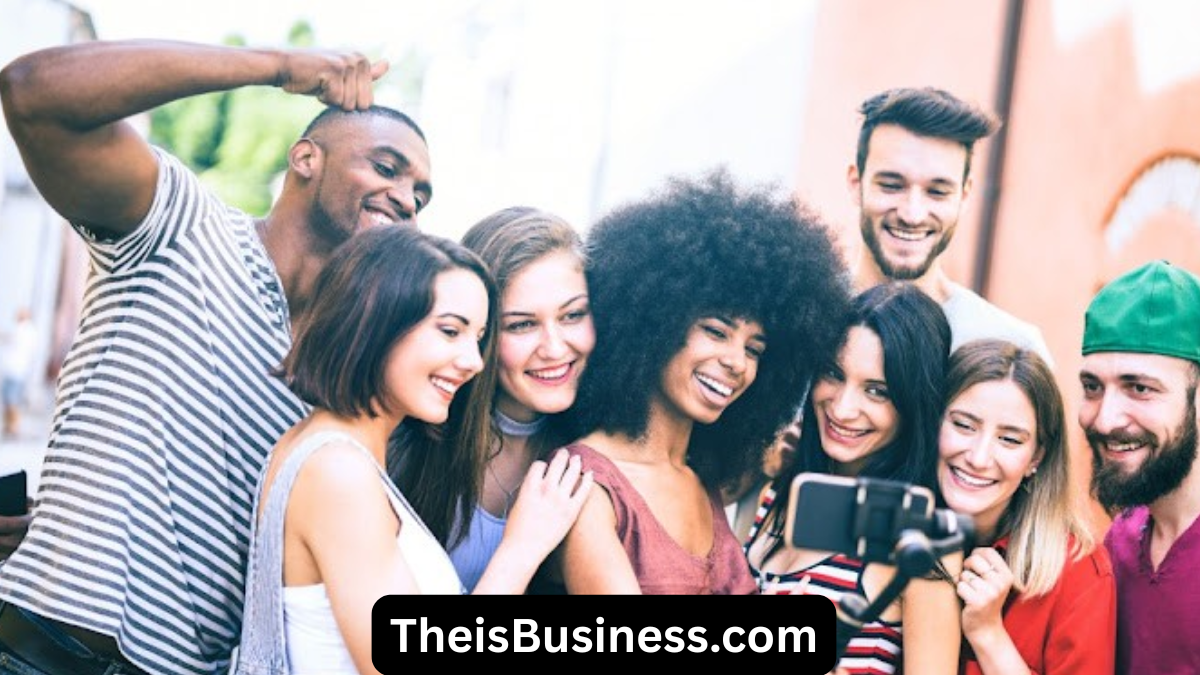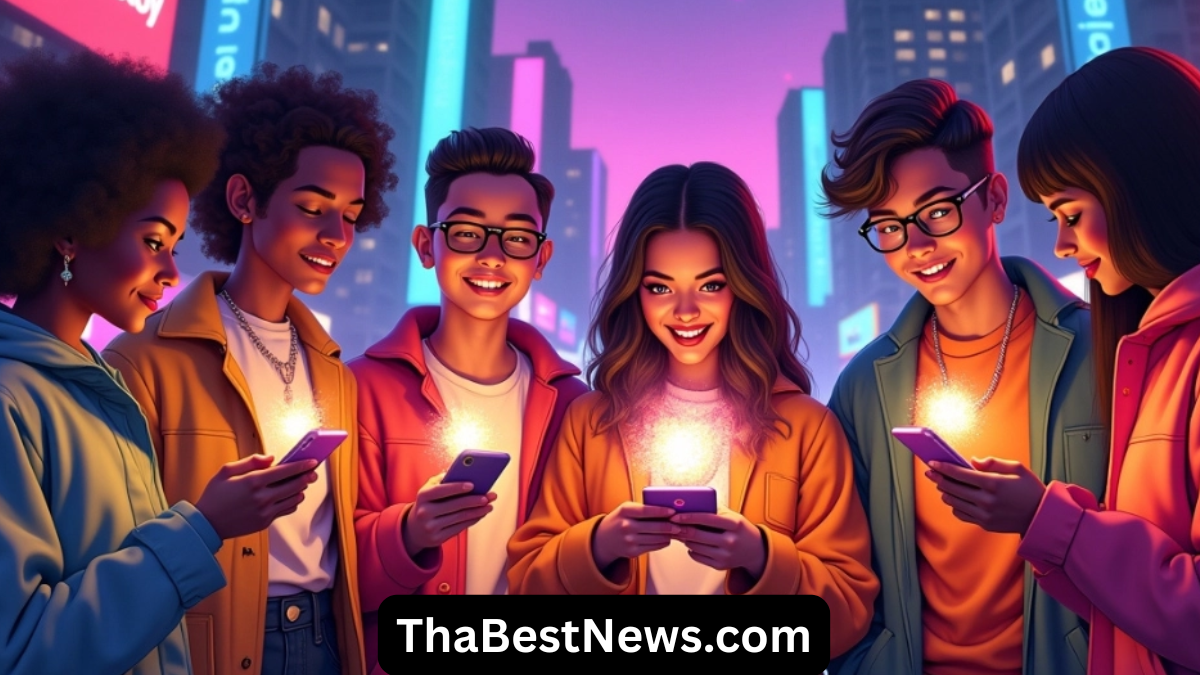The Rise of Influencer Culture in the Digital Age
Influencers Gonewild In the modern era, the concept of celebrity has taken on an entirely new form. No longer confined to film stars, musicians, or athletes, today’s celebrities can be everyday individuals who rise to prominence through digital platforms. The term “influencer” has become synonymous with those who harness the power of social media to build massive followings and sway public opinion, consumer trends, and popular culture. What once started as a way to share lifestyles and passions has now turned into a multimillion-dollar industry, driven by sponsorship deals, brand partnerships, and a near-constant spotlight on personal lives.
However, not all that glitters is gold in the influencer industry. While many content creators build positive reputations and inspire followers, some have veered into controversy, intentionally or unintentionally disrupting their online personas. This darker side of influencer culture, often referred to by the sensational phrase “influencers gonewild,” explores the chaotic, unpredictable, and sometimes scandalous behavior of influencers who step outside accepted social norms.
Understanding the Meaning Behind “Influencers Gonewild”
The phrase “Influencers Gone Wild” can be interpreted in different ways depending on context. On one hand, it can refer to influencers who have simply let loose, broken away from traditional decorum, and showcased a raw, unfiltered version of themselves. This could include partying excessively, engaging in controversial conversations, or creating provocative content that pushes the boundaries of what is considered acceptable on social media.
On the other hand, “gonewild” can also carry a more serious implication, pointing to influencers involved in scandals, public meltdowns, or behaviors that have sparked massive backlash from followers and the media alike. In many cases, these moments are caught on camera or shared live, leaving little room for retraction. This phenomenon reflects how the pursuit of fame and relevance can drive individuals to act impulsively or recklessly, all in the name of staying relevant or boosting engagement.
The Role of Social Media in Amplifying Controversy
Social media platforms like Instagram, TikTok, YouTube, and Twitter have revolutionized how people share information and consume content. While they offer an unmatched opportunity for creative expression and entrepreneurial ventures, they also magnify every misstep. A single post, story, or video can go viral in minutes, reaching millions of users across the globe. This rapid exposure creates an environment where influencers are under constant pressure to entertain, engage, and shock their audiences.
The same platforms that build influencer empires can also dismantle them with alarming speed. One misjudged comment, controversial collaboration, or offensive joke can spark widespread criticism, often referred to as being “canceled.” Influencers gonewild often find themselves at the mercy of online outrage, where audiences react with intense scrutiny and demand accountability. In some cases, the fallout is severe, leading to lost sponsorships, deleted accounts, and mental health challenges.
The Blurred Line Between Entertainment and Exploitation
The concept of going wild may begin as a form of entertainment—pushing content boundaries for laughs, likes, and views. But this often teeters on the edge of exploitation, both for the influencer and their audience. Many influencers, particularly younger ones, may not fully understand the long-term implications of their actions. The constant desire to shock or amuse followers can lead to choices that exploit personal trauma, sexualize content unnecessarily, or degrade others for the sake of virality.
Audiences play a pivotal role in this dynamic. They crave authenticity and rawness but also demand perfection and accountability. This dual expectation creates a paradox where influencers are encouraged to be real but punished when that reality doesn’t conform to societal expectations. When influencers go wild, it’s often a symptom of deeper issues such as burnout, the pursuit of validation, or the stress of maintaining an online persona that doesn’t align with one’s true self.
Controversies That Redefine Public Perception
Throughout the evolution of influencer culture, there have been countless examples where influencers’ wild antics have either made or broken their careers. Some influencers have used controversy as a stepping stone, gaining millions of followers in the wake of scandal, capitalizing on the attention to build new ventures or rebrand themselves. Others have seen their careers nosedive, with audiences turning on them, platforms suspending their accounts, and brands severing all partnerships.
These incidents not only affect the influencers themselves but also shift public discourse about influencer responsibility. Should influencers be held to the same standards as celebrities? Are they role models, or merely entertainers? As influencers continue to amass greater influence over youth and pop culture, these questions become increasingly important.
Mental Health and the Pressure of Always Being “On”
Another significant aspect of influencers gonewild is the psychological toll of constant content creation and online exposure. Influencers are often expected to maintain a picture-perfect image, document every moment of their lives, and be perpetually engaging. This pressure to always be “on” can lead to severe mental health challenges including anxiety, depression, and even substance abuse.
The decision to go wild, in some cases, may not be a calculated marketing move but rather a cry for help or a symptom of burnout. The influencer economy doesn’t typically provide structure or support systems; most creators work alone or with small teams. As a result, when the cracks begin to show, the breakdown is often public and dramatic.
Many influencers have spoken openly about their mental health struggles after controversial moments. Some take breaks from the internet to recover, while others use their experiences to advocate for greater awareness of the emotional challenges that come with internet fame.
Cultural Fascination with Trainwreck Content
Audiences are often drawn to content that feels raw, unscripted, and even chaotic. There’s a voyeuristic element to watching influencers go wild, as viewers become both witnesses and participants in a real-time drama. This fascination with public breakdowns, reckless behavior, or sensational rants fuels a cycle of clicks, views, and comments that incentivize more of the same.
The more unpredictable an influencer becomes, the more attention they garner. This is a dangerous loop, as it rewards unstable behavior and encourages others to replicate the same for attention. In some cases, influencers may even stage controversies, manufacturing drama to stay relevant in an ever-changing digital landscape.
Ethics and Accountability in Influencer Culture
As influencers continue to wield considerable power, the question of ethics becomes central. What responsibilities do influencers have toward their audiences, especially younger followers? How can platforms regulate harmful behavior without stifling creativity or free speech?
The discussion about accountability is ongoing. While some influencers acknowledge their missteps and work to grow from them, others dismiss criticism as “cancel culture” and double down on their behavior. Meanwhile, brands are becoming more cautious about the personalities they associate with, recognizing that controversy, while attention-grabbing, doesn’t always translate into long-term success or consumer trust.
Regulation is also a complex issue. Most platforms rely on community guidelines and user reporting, but enforcement is often inconsistent. Some influencers slip through the cracks while others are penalized harshly. The line between self-expression and social harm is often blurred, making it difficult to draw clear boundaries.
The Future of Influencers Gonewild
As the digital world continues to evolve, so too will the nature of influencer culture. The era of influencers gonewild is unlikely to end anytime soon, but it may begin to shift in tone. Audiences are becoming more aware, more critical, and more invested in authenticity over shock value. Influencers who rely solely on sensationalism may find themselves losing relevance as new creators emerge with more meaningful, grounded content.
At the same time, the industry must reckon with the mental, emotional, and ethical consequences of the influencer lifestyle. Conversations about transparency, consent, exploitation, and sustainability in content creation will shape the future of the space. Only by addressing these complex issues can the influencer economy mature into a more responsible and balanced ecosystem.
Ultimately, influencers gonewild is not just about individual actions. It’s a reflection of the broader digital culture—one that thrives on attention, punishes vulnerability, and constantly shifts the goalposts for success. Whether it leads to ruin Influencers Gone Wild or reinvention, it is a powerful reminder of the human cost behind the screens we so frequently scroll.
Frequently Asked Questions (FAQs)
What does the term “influencers gonewild” mean?
The term typically refers to situations where social media influencers engage in unpredictable, controversial, or reckless behavior that breaks societal or platform norms, often resulting in widespread public attention or backlash.
Is going wild part of an influencer’s strategy to get more views?
In some cases, yes. Certain influencers intentionally create shock value content to attract attention and increase engagement. However, others may unintentionally go wild due to stress, personal issues, or lapses in judgment.
Are influencers held accountable for their actions online?
Accountability varies. Some influencers face significant consequences such as losing brand deals or being banned from platforms, while others may gain even more followers due to the controversy. Public response plays a major role in determining accountability.
Why are people drawn to influencers who act out or cause drama?
People are often fascinated by unpredictability and drama, especially when it feels authentic or unscripted. Watching influencers go wild can be entertaining, shocking, or even relatable, which keeps viewers engaged.
How can influencers avoid going too far?
Staying grounded, maintaining a support system, taking breaks from social media, and being mindful of their influence can help creators avoid harmful behavior. Many also work with managers or advisors to navigate the pressures of online fame responsibly.
Can influencers recover from controversies?
Yes, some influencers have successfully rebranded or regained public trust after controversies by owning up to their mistakes, changing their behavior, and focusing on meaningful content. However, recovery often depends on the severity of the incident and public perception.
Is the influencer lifestyle mentally draining?
Yes, maintaining an online presence and catering Influencers Gonewild to an ever-demanding audience can be emotionally and mentally exhausting. Many influencers report burnout Influencers Gone Wild, anxiety, and depression due to the pressures of their roles.
What should viewers do when influencers go wild?
Viewers should consider the context, avoid spreading hate, and critically assess the behavior without blindly supporting or condemning. Engaging responsibly and supporting creators who prioritize ethical content helps shape a healthier online culture.


